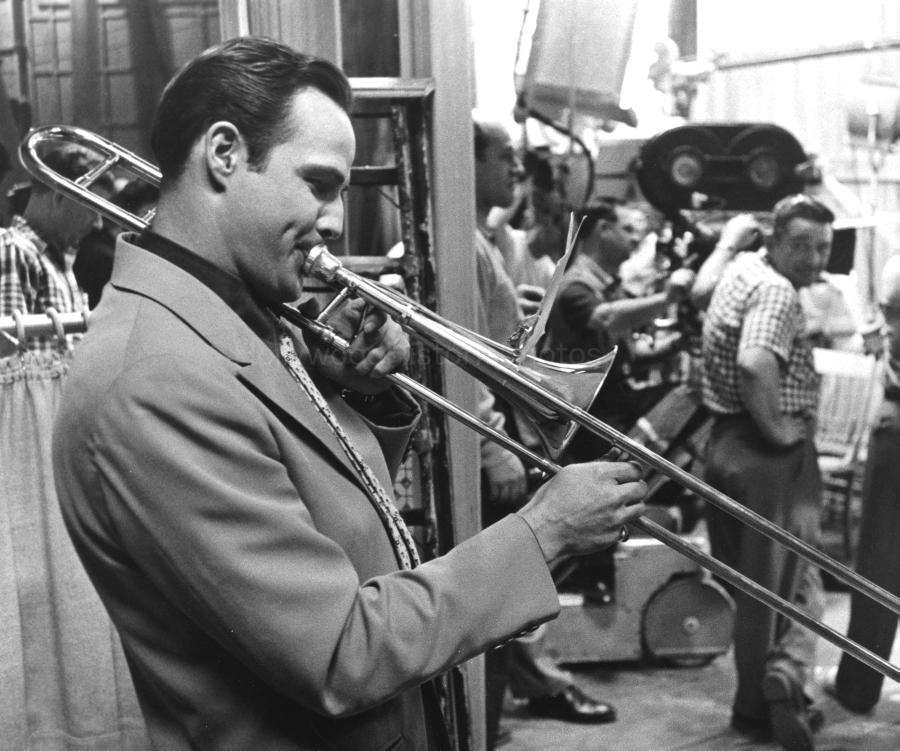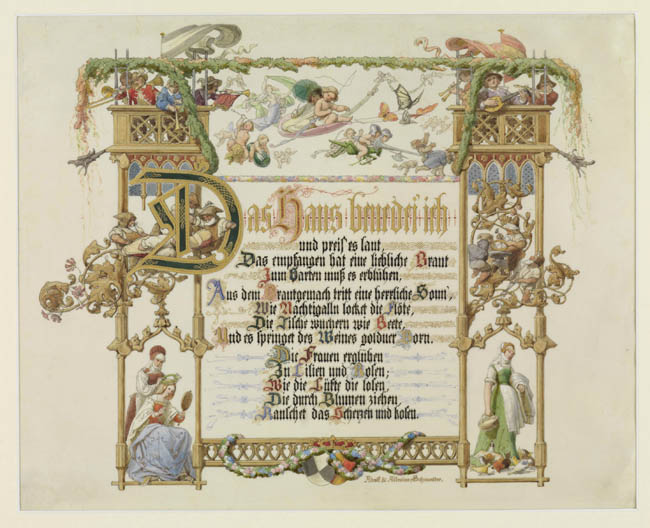I have just added these 20 images and their captions, spanning multiple centuries, to the Trombone History Timeline. Enjoy!
1578—Lugano, Switzerland: After this date, decoration of cherubs in the Lugano Cathedral includes a cherub playing trombone (see below image; public domain).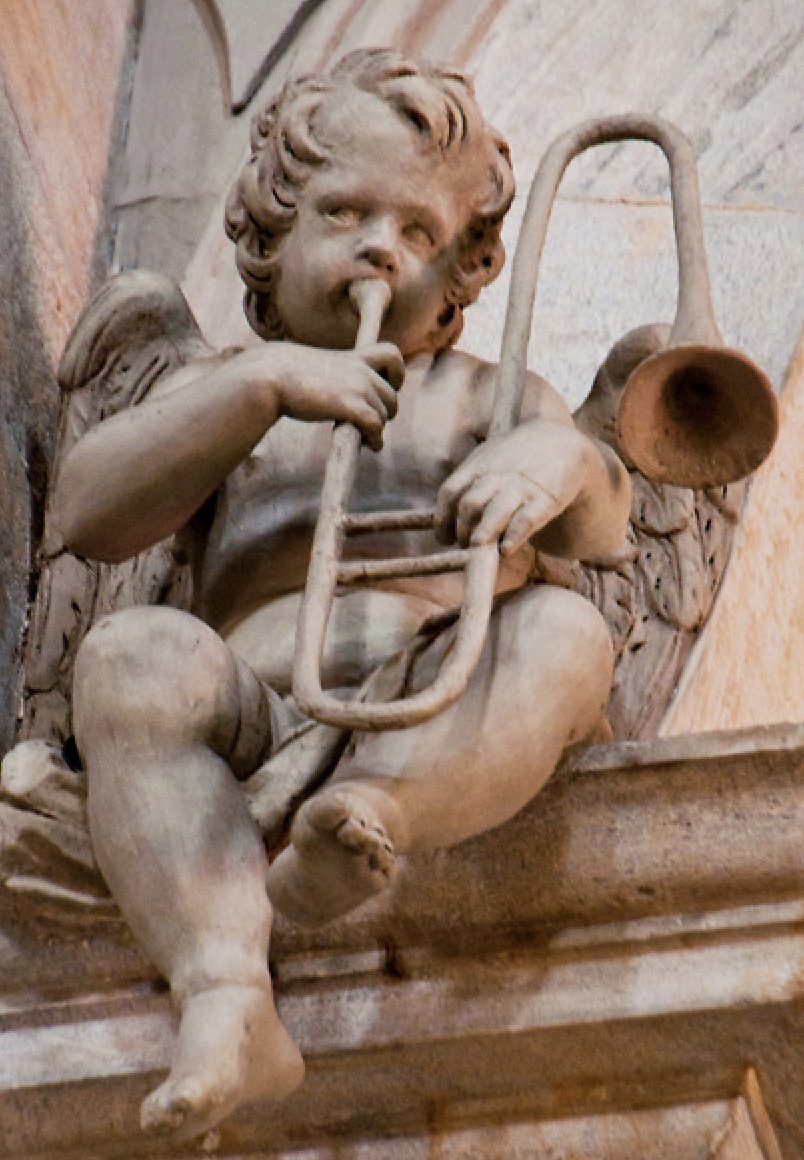
17th century—A Flemish painting, Wedding at Canaa, depicts several instruments, including what is probably a trombone, playing from a loft (see detail and full image below; public domain) (special thanks to Tassos Dimitriadis).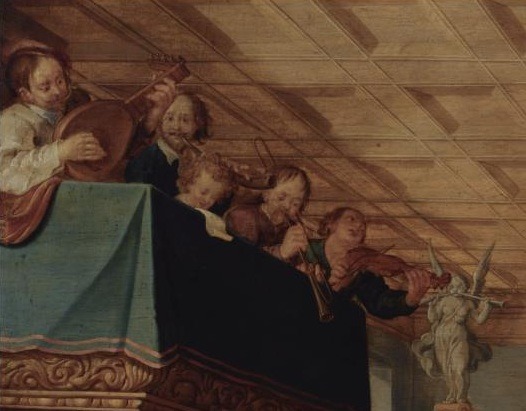
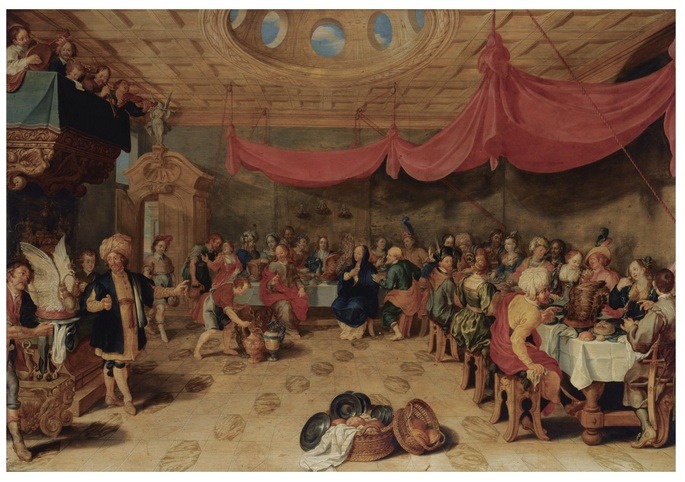
Early 17th century—The upper portion of The Blessed Virgin with an Angelic Concert and Holy Cecilia, a painting attributed to Flemish master of the Early 17th Century, is very similar to Pieter de Witte’s painting, David Singing God’s Praise, along with its many copies (see below detail; public domain) (Cantore Galleria Antiqua, www.galleriacantore.it).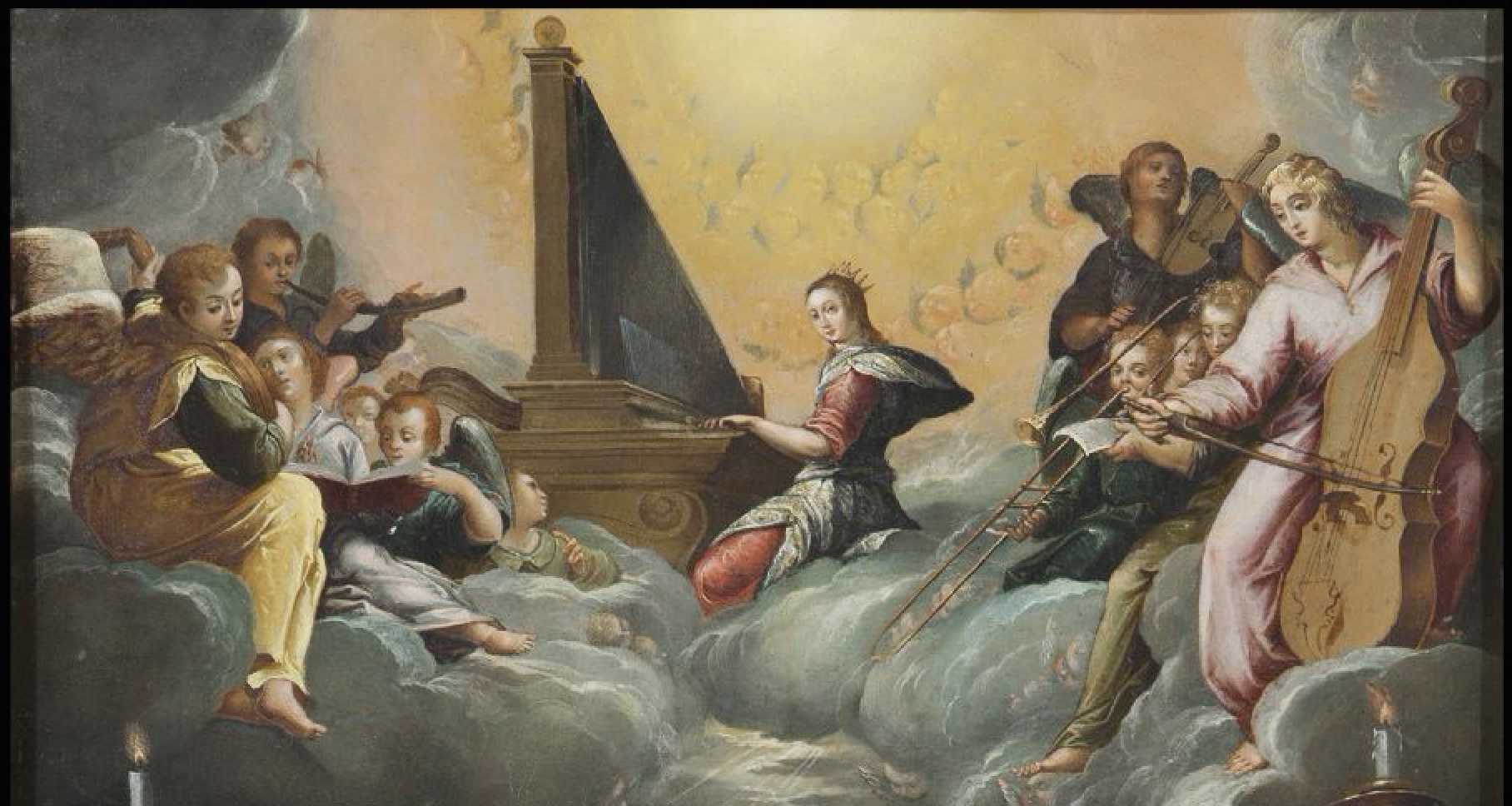
17th century—Toledo, Spain: A painting in Convento de las Concepcionistas titled Ángeles músicos sobre San Francisco follows closely the upper portion of Pieter de Witte’s painting, David Singing God’s Praise, except St. Cecilia and the cornetto player are missing (see below detail; public domain).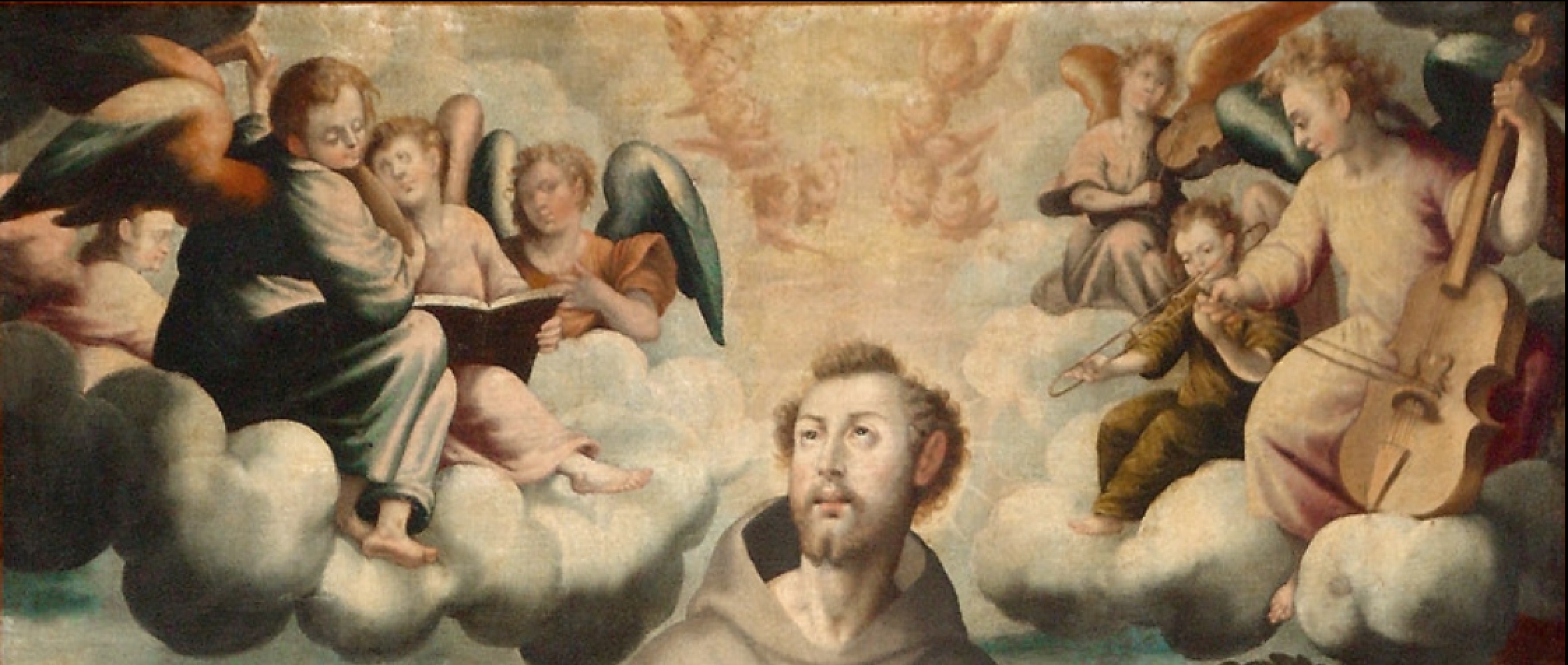
17th century—Vijf muzikanten op een bal, a print from the Dutch school, features a trombone as a member of a wind quintet (see below image; public domain) (special thanks to Tassos Dimitriadis).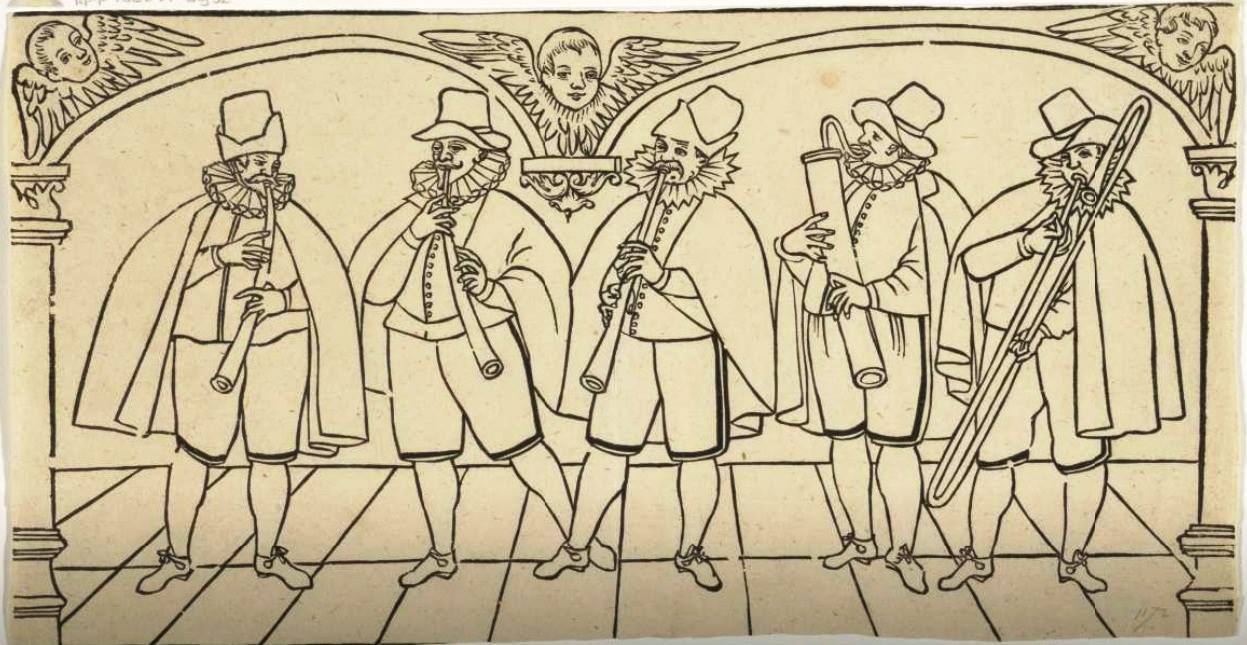
1837—Johann Baptist Lachmüller’s print, Bamberg Maskerede, features 2 different rear-facing trombones (see below image; public domain). Special thanks to Tassos Dimitriadis.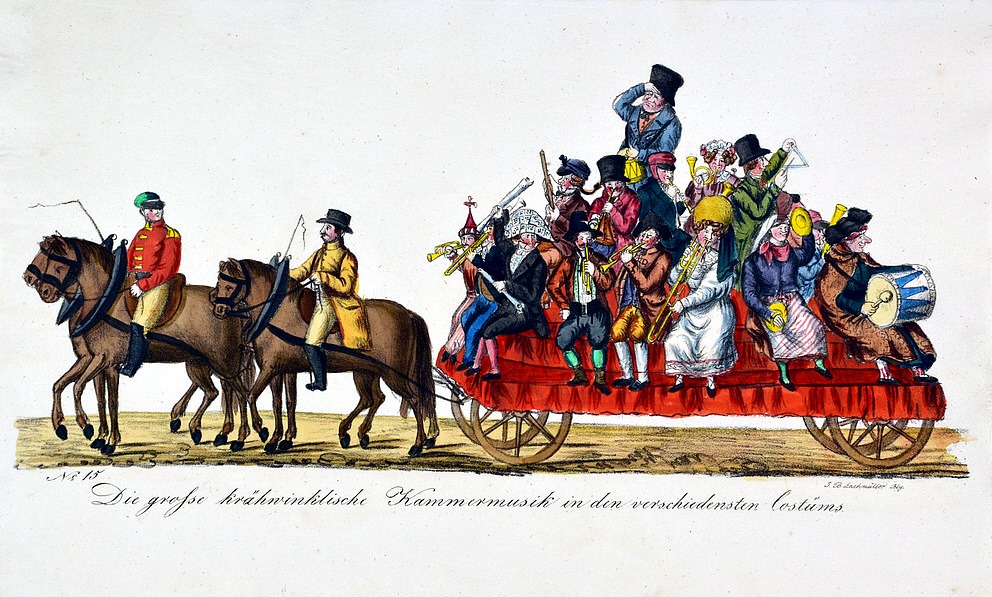
1856—Düsseldorf, Germany: Bridal Song, a watercolor and pencil image by Adolph and Alwine Schroedter, includes what appears to be a rear-facing trombone (see detail and full image below; public domain) (Museum Karlsruhe).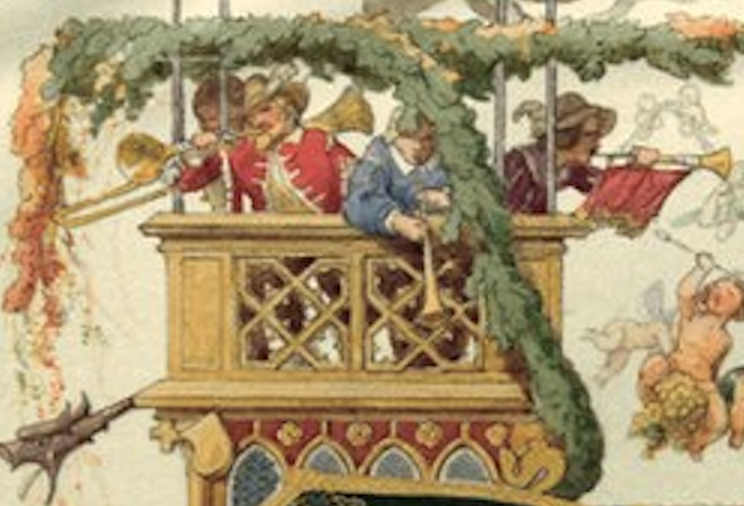
1862-65—“Man Playing and Keeping Others Awake,” a French tissue stereocard marked B.K. Photos and J.M., appears to be a photographic re-creation of the painting by Robert William Buss, c. 1838 (see below image; public domain).
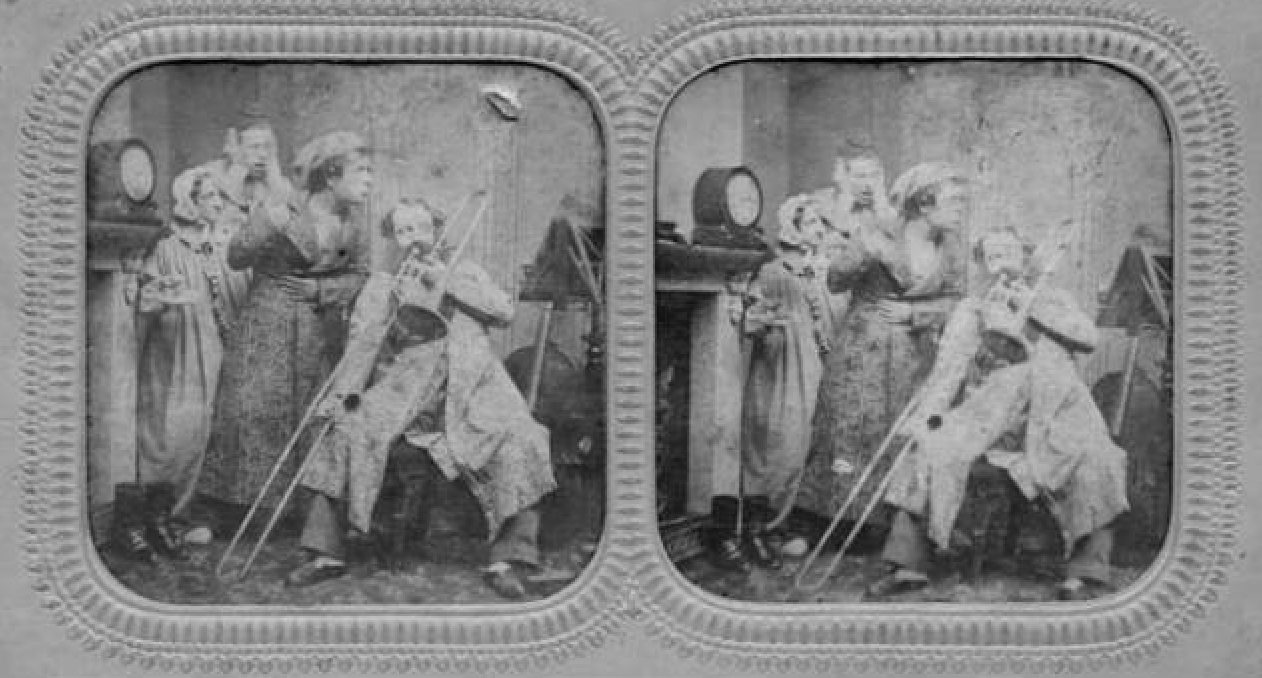
1888—Bethlehem, Pennsylvania: An image in Harper’s Weekly portrays Moravian trombones accompanying singing at the town cemetery at an Easter sunrise service (see detail and full image below; public domain).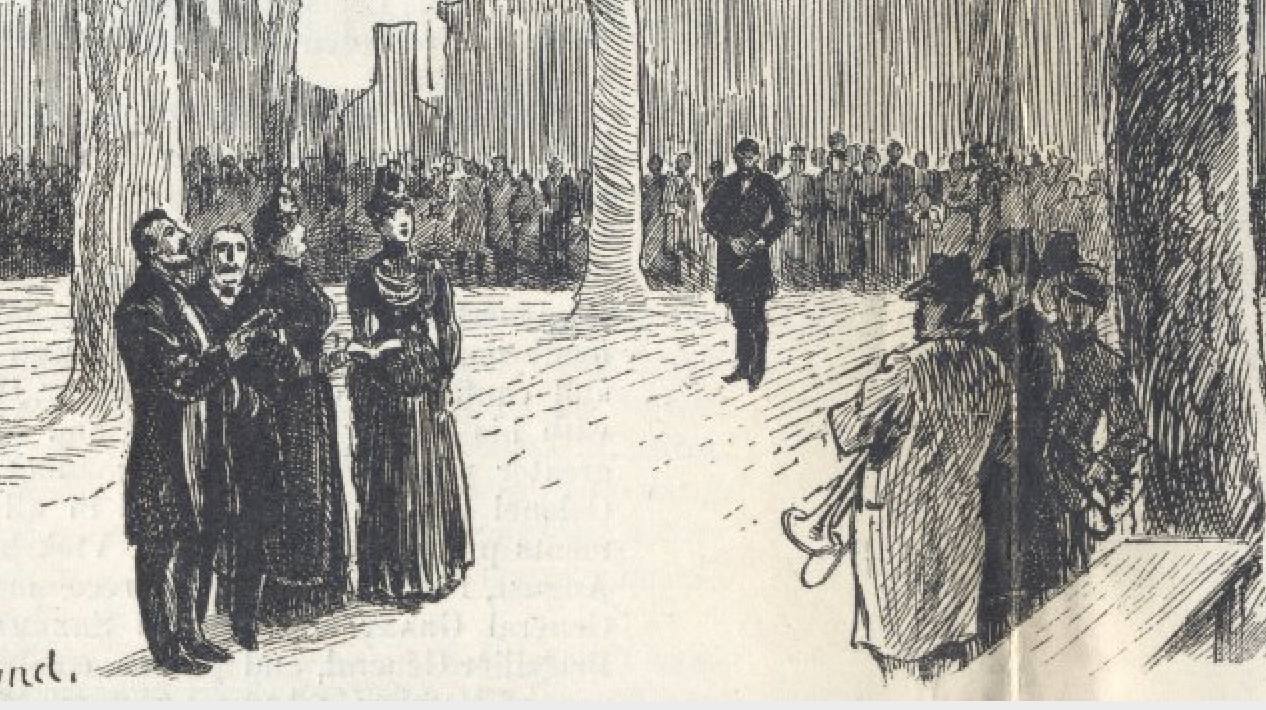

1889—New York: An engraving published in Harper’s Weekly titled The Seventh Regiment Band on the Marchfeatures a half dozen trombones in the front row (see below image; public domain).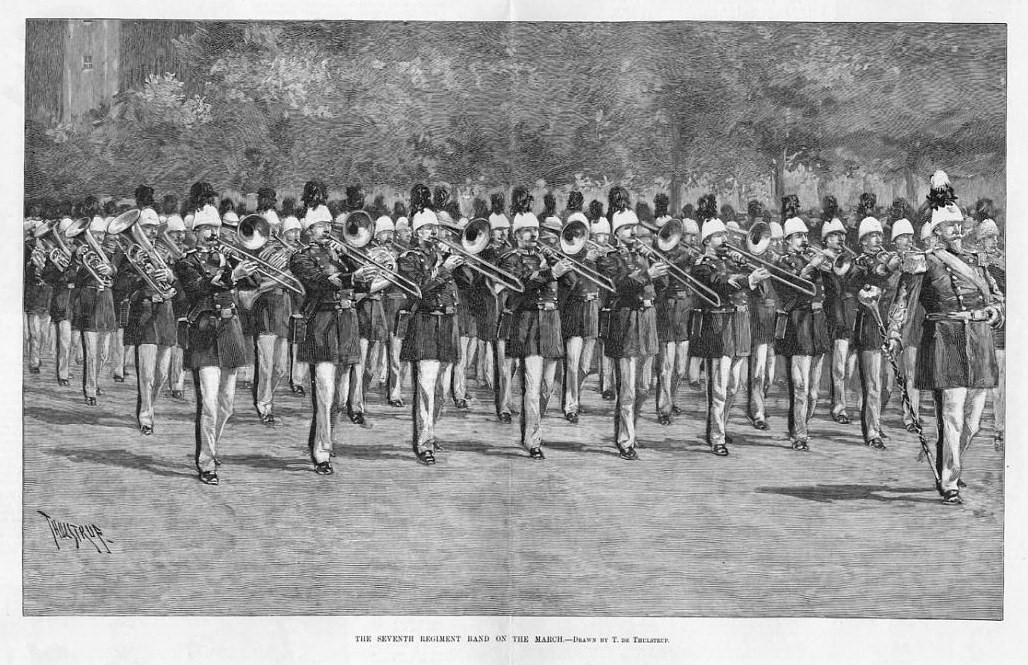
1889—Madrid, Spain: An engraving in La Ilustración Española y Americana depicting the wedding of princess Borghese in Rome includes a trombone with a music ensemble (see detail and full image below; public domain).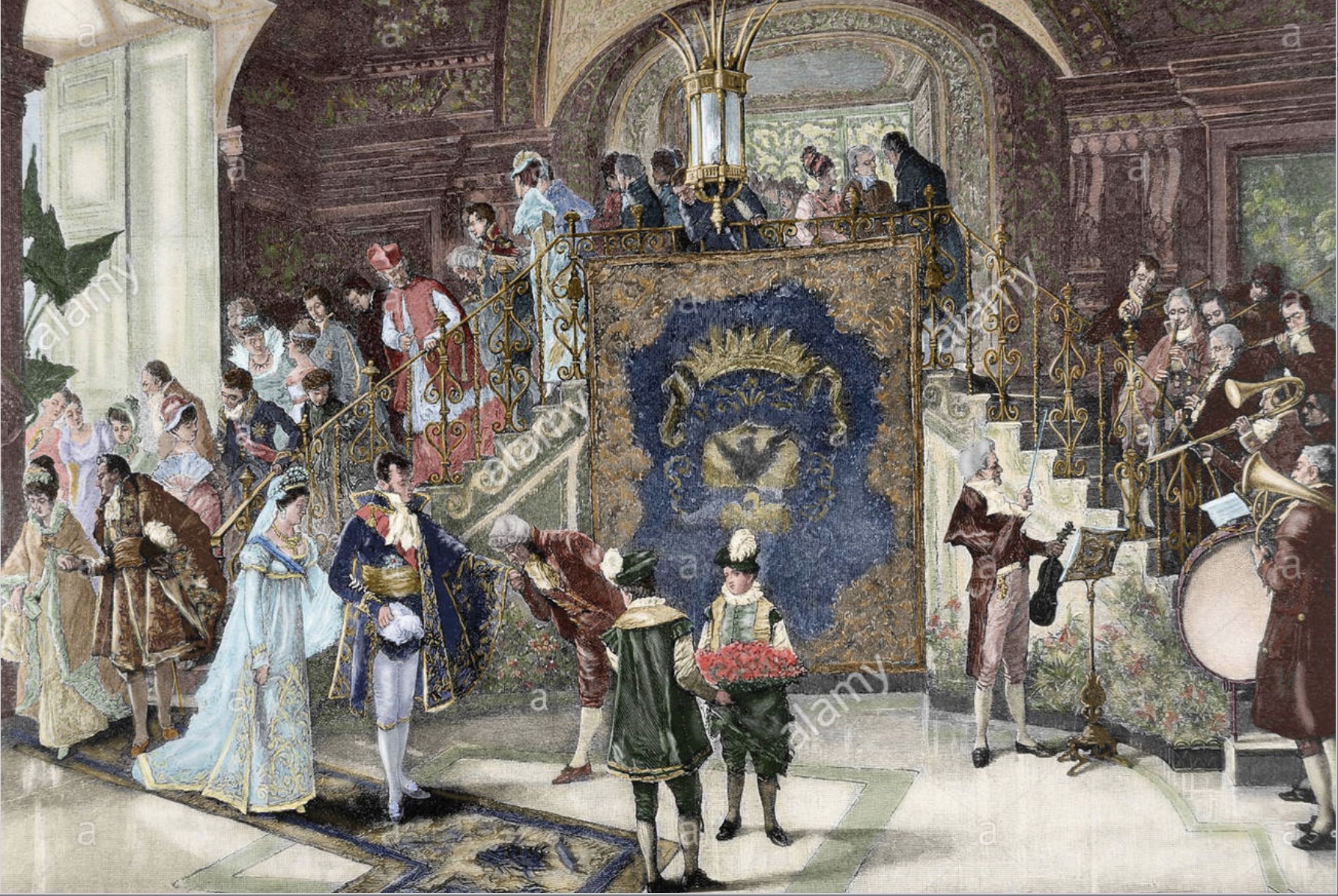
1893—Paris, France: Nouvelle méthode de trombone a 3 et 4 pistons (clé de sol), a valve trombone method by Jean-Baptiste Schiltz (1807-1868), is published in Paris (see below image; public domain) (National Library of France).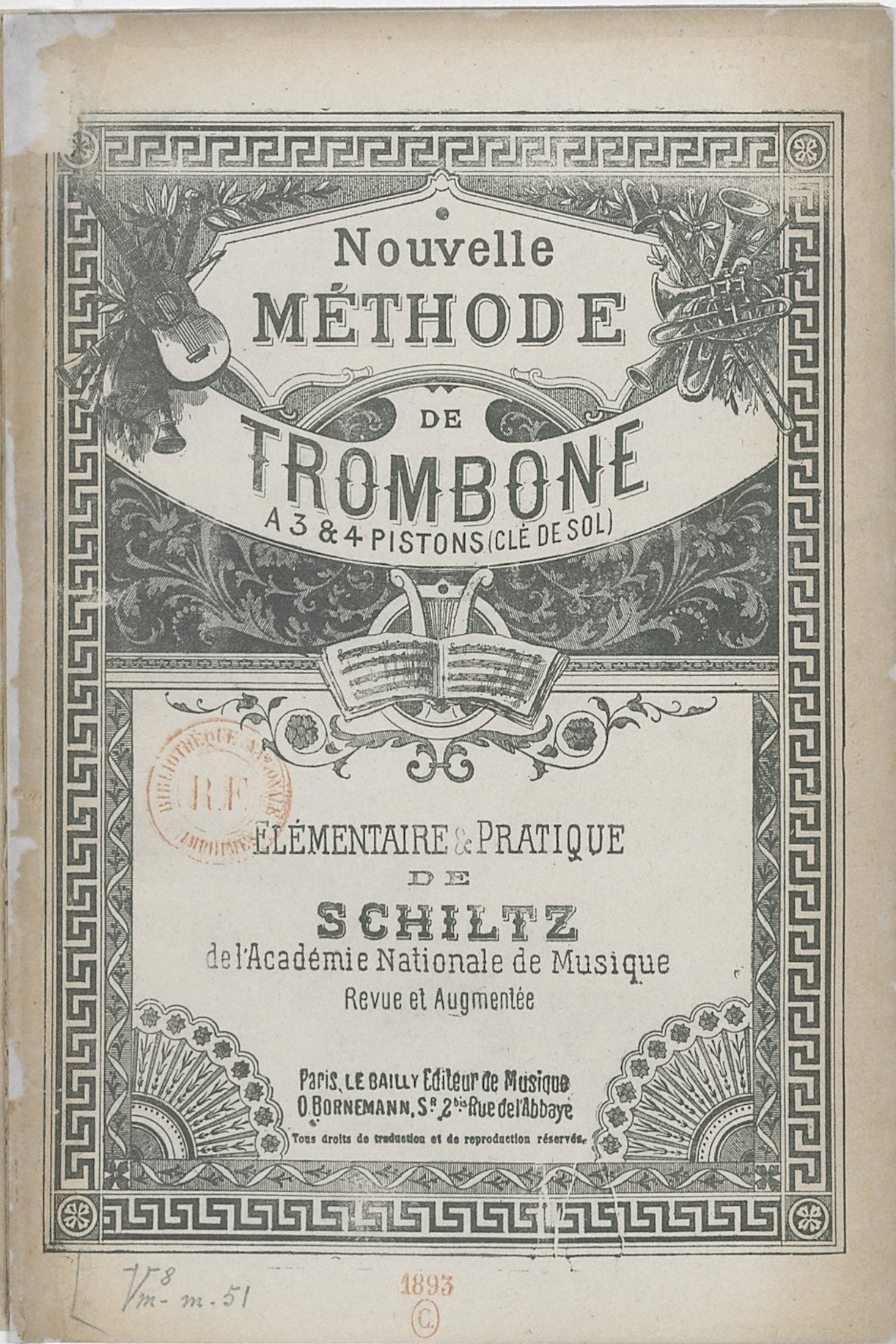
1894—France: Adrien Lagard’s Metodo de trombón de tres y cuatro pistons, Spanish translation (see below; public domain) (National Library of France).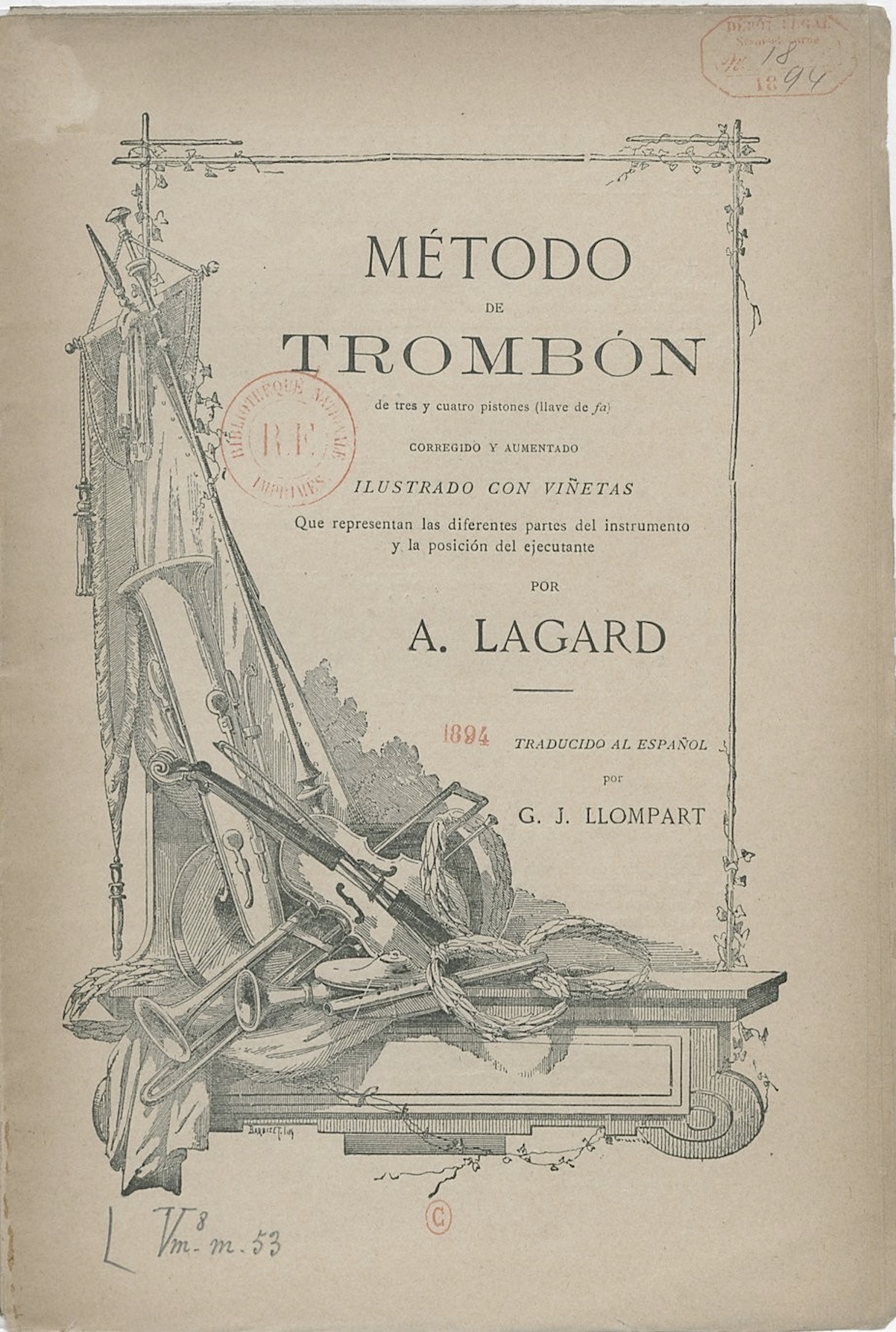
1898-1904—A French engraving from Nouveau Larousse Illustre shows many musical instruments, including a serpent, an ophicleide, a valve trombone, and a slide trombone (see below image; public domain).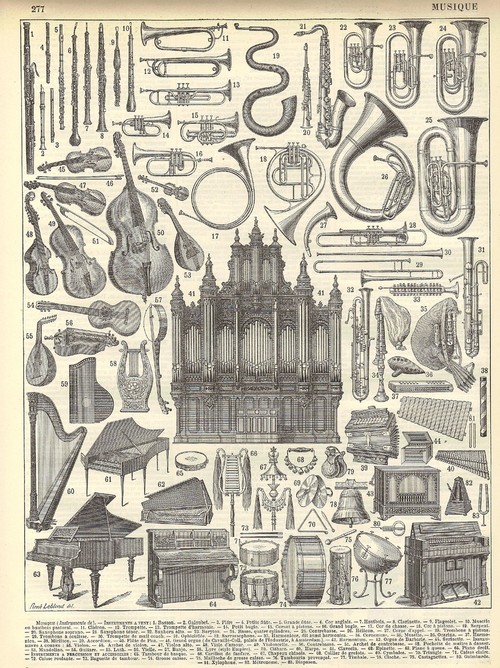
1899—New York, New York: William J. Glackens, in an illustration for Arthur Colton’s story, The Portate Ultimatum, includes a trombone among a band in a crowded street in an imaginary South American city (see below image; public domain).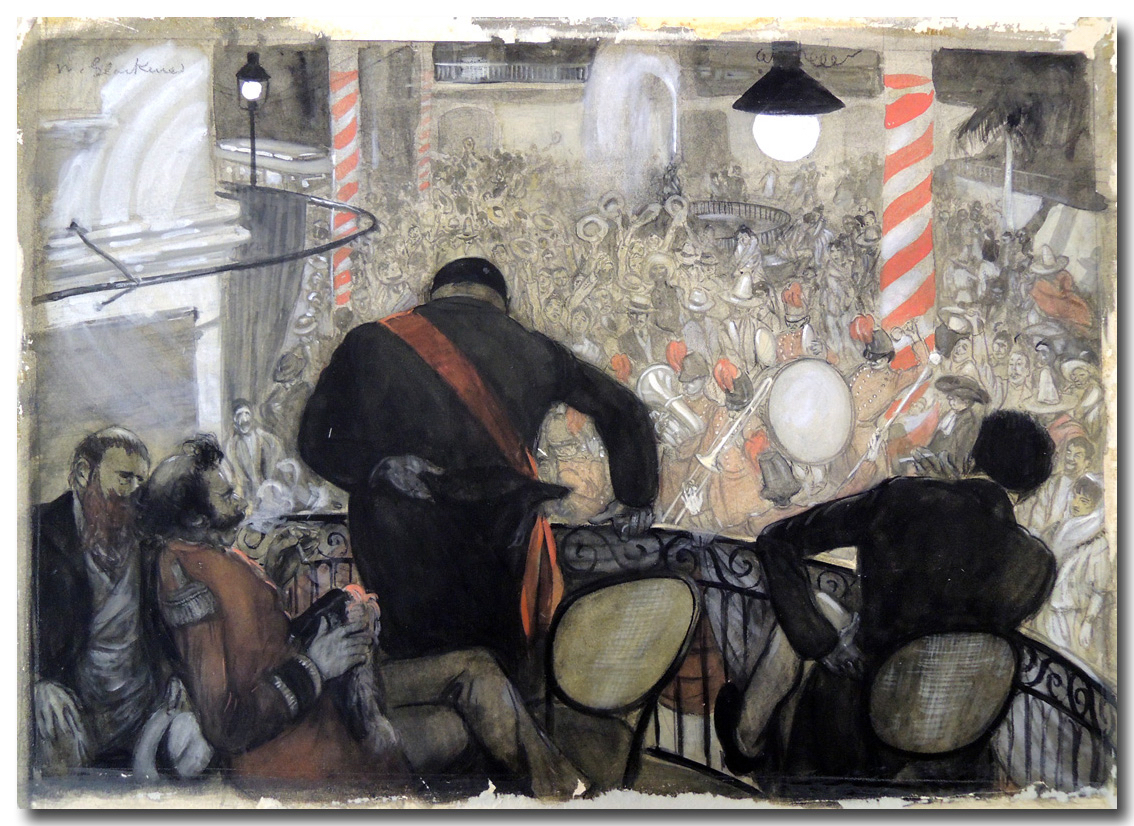
c. 1901-1905—Arthur, Illinois: A photograph captures a delivery boy for Rigney Haney General Store standing by the delivery wagon, practicing trombone (see below image; public domain) (Arthur, Illinois Public Library).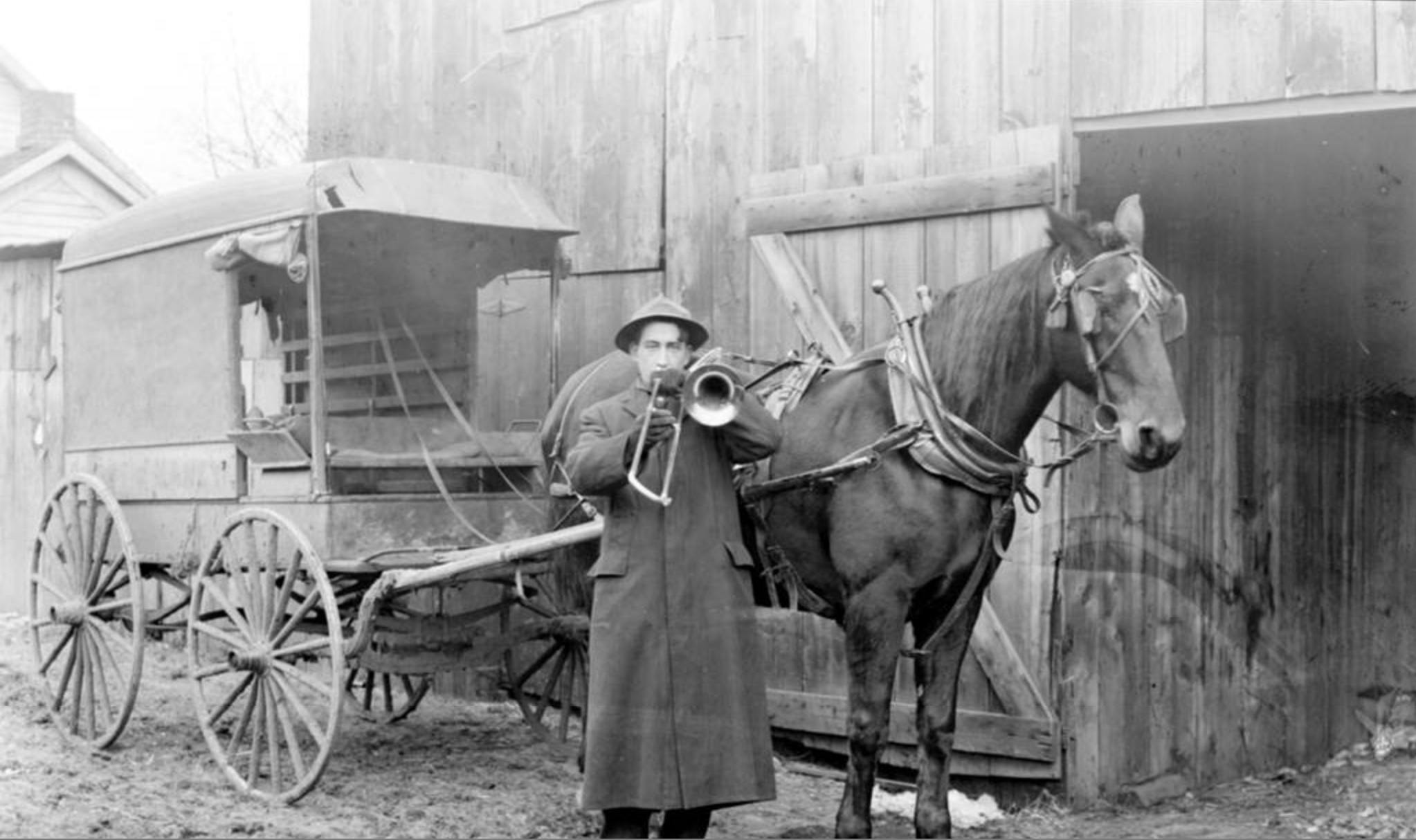
c. 1910—Landskrona, Sweden: A photograph of Salvation Army musicians includes a pair of valve trombones (see below image; public domain) (Landskrona Museum).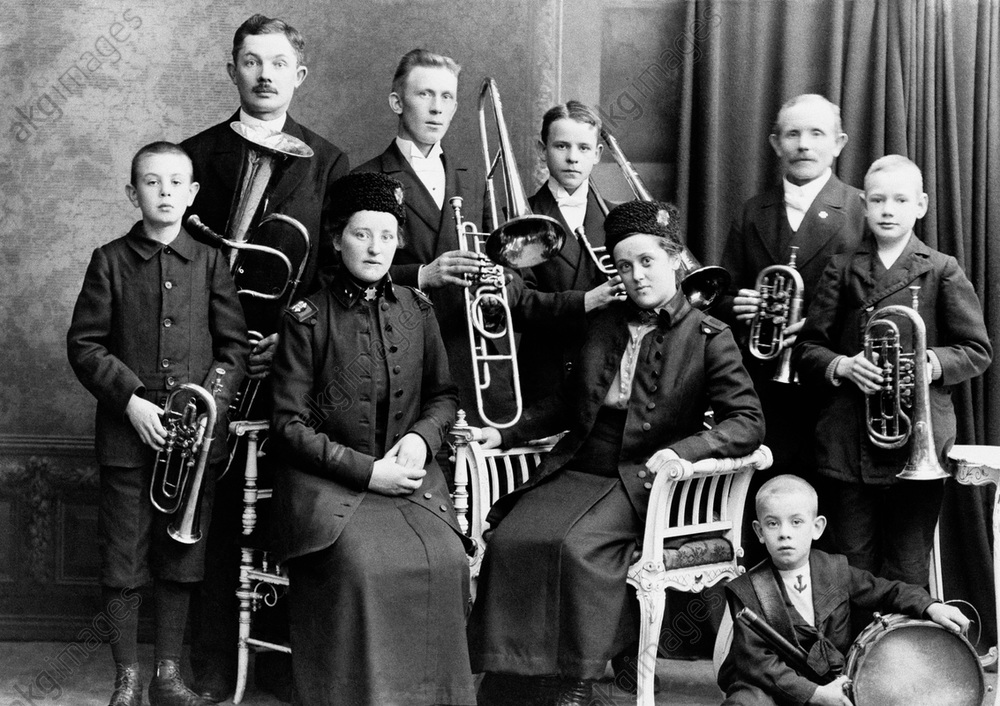
1912—Kaikorai, New Zealand: A trio of trombonists poses in military uniform (see below image; public domain) (Hocken Collection, University of Otago Library).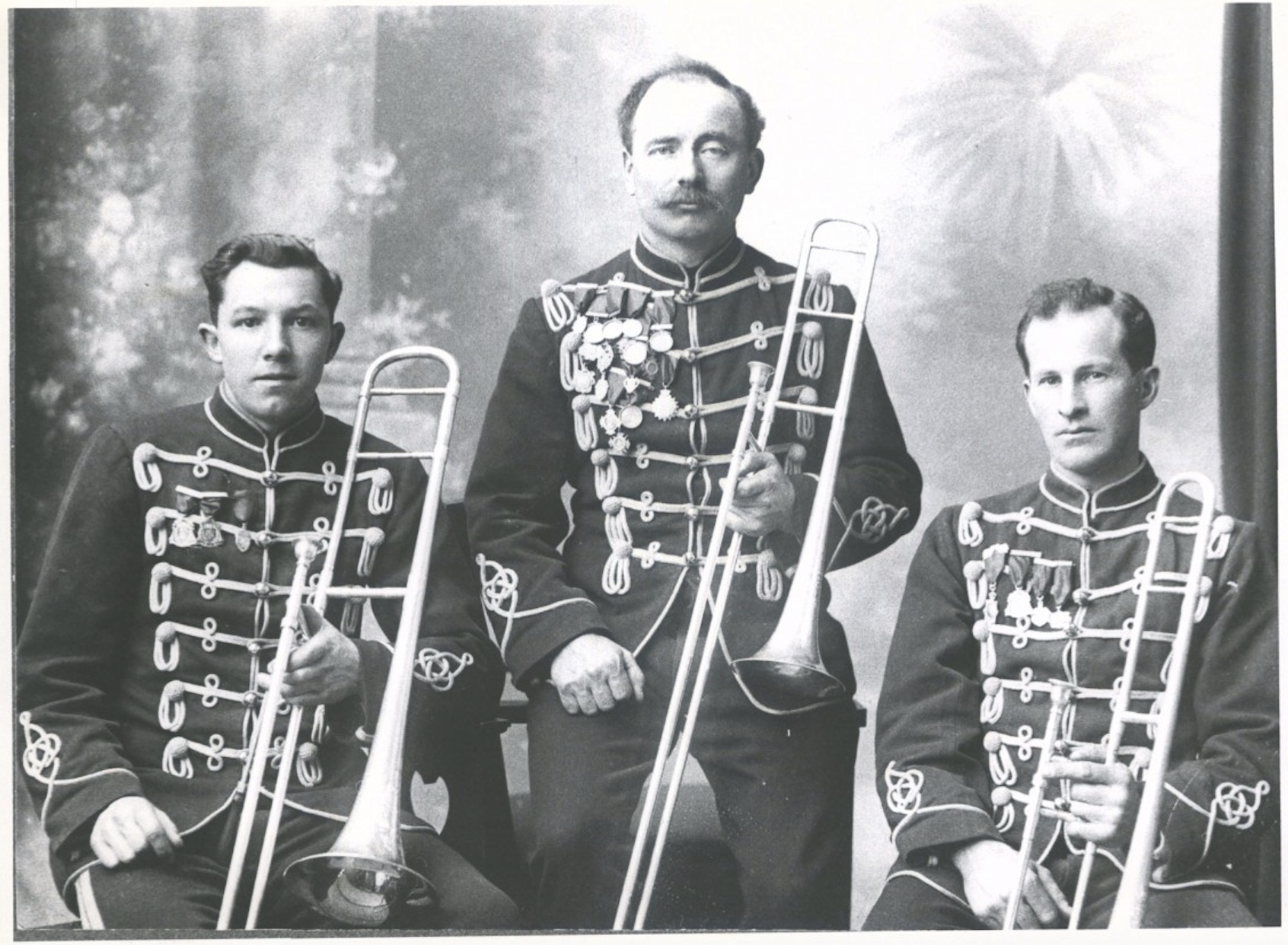
1918—A photograph of Charlie Chaplin shows him trying to play the trombone in his studios as two bystanders plug their ears (see detail and full image below; public domain). Special thanks to Ken Shifrin.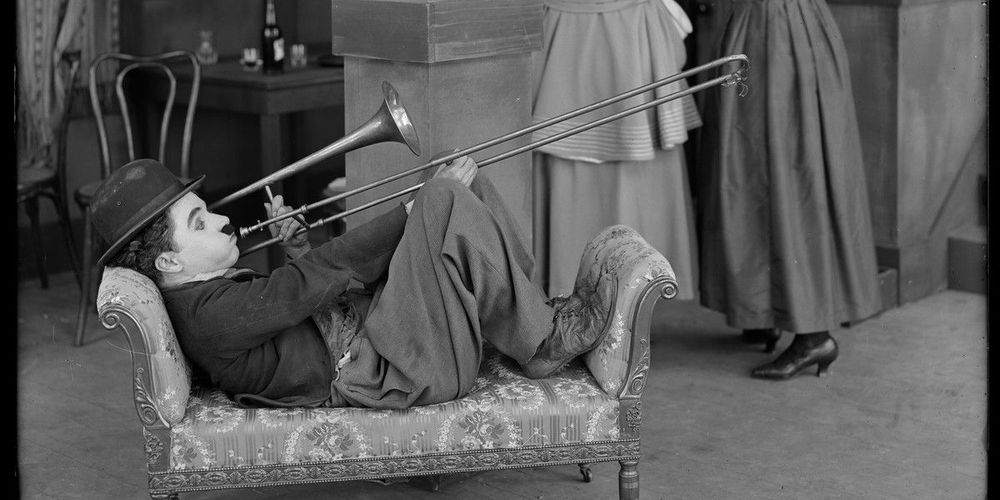
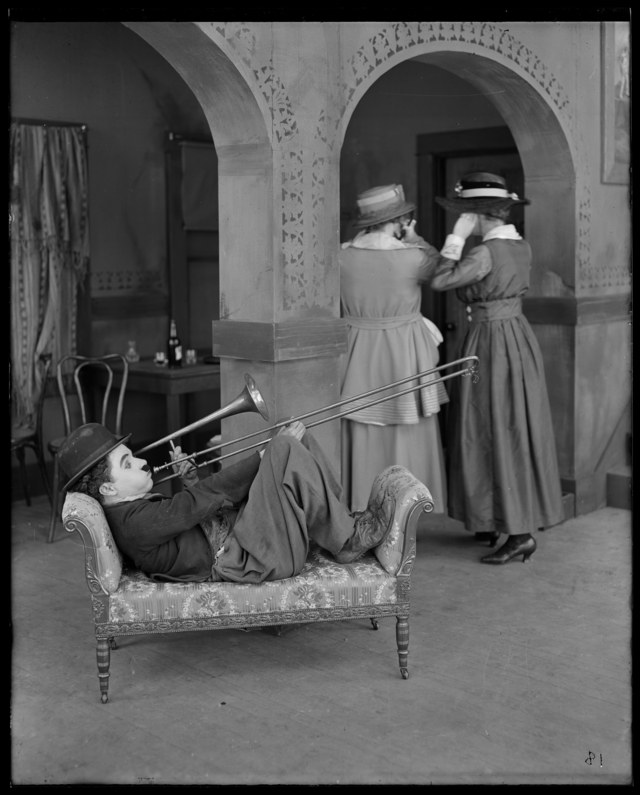
1955—Marlon Brando practices trombone between scenes on the film set of Guys and Dolls (see below image).